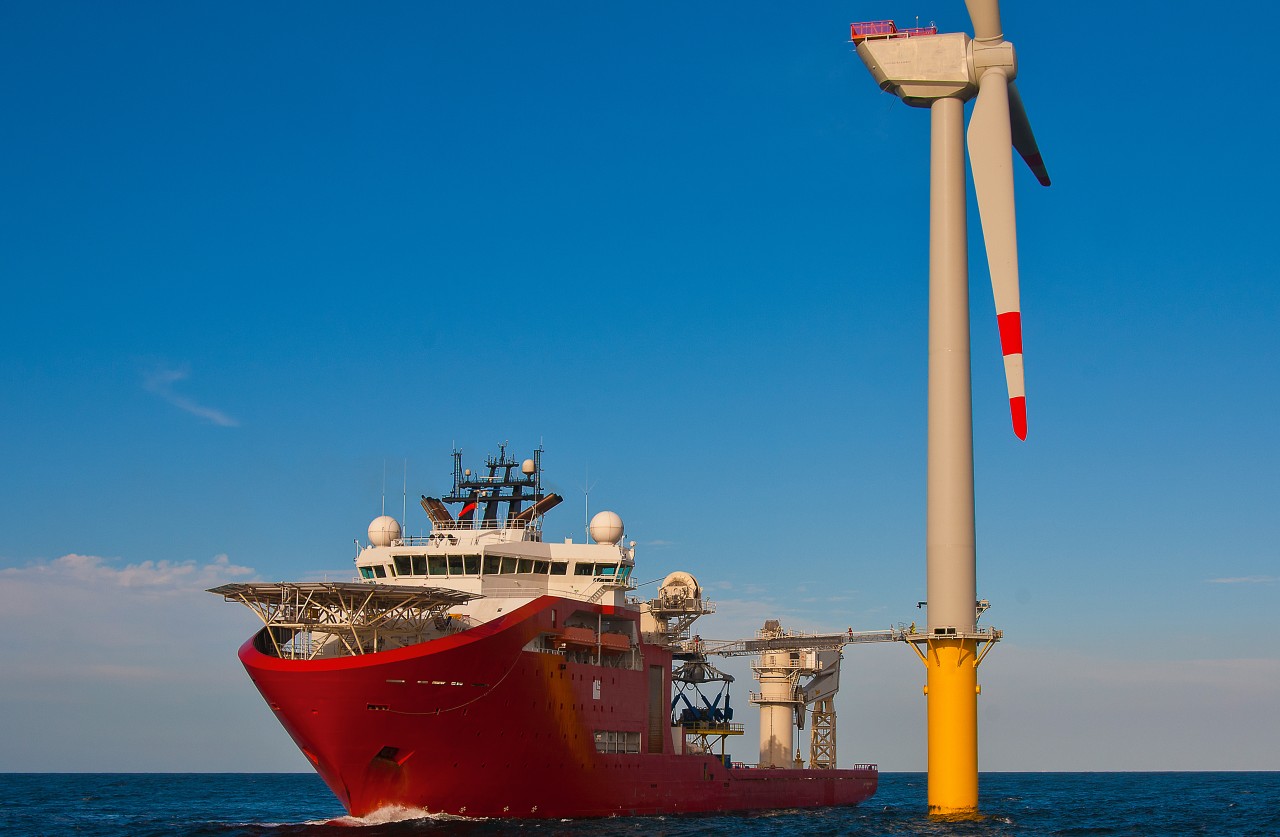Get in touch with us for any questions or quotes on surveying services and products. We will respond back as soon as we can.
Zupt's Positioning Solutions for Offshore Monopile Installation
The growing demand for renewable energy has led to the development of offshore wind farms, which have become increasingly common in the UK, Europe, and the Asia-Pacific regions over the past decade. However, the installation of these offshore structures presents unique challenges due to the increasingly large turbines' tight installation tolerances, limited vessel availability, and complex scope of work. These challenges require innovative solutions to ensure efficiency, accuracy, and reliability during the installation of wind farms.
Challenges in Offshore Wind Farm Installation
With offshore wind farm developments still relatively new, there is a growing need for more advanced installation methods, especially with the installation requirements of each unique field. Current camera systems, while useful, have limitations on visibility. They often require close proximity to the monopile for clear imaging, which is not always possible on the installation vessel, and as they solely rely on visibility, adverse environmental conditions like fog, darkness, or direct sunlight can hinder their effectiveness. Collectively, this has prompted a growing need for more advanced installation methods.
Offshore wind turbine installation typically involves pile-driving the monopiles into the seabed, serving as the foundation for the transition piece, mast, and wind turbine generator. As these offshore structures are much larger than their onshore counterparts, installation tolerances are tighter accordingly. Consequently, there's a heightened focus on the efficiency of installation processes, technological accuracy, and reliability to ensure structural longevity.Importance of Accurate Positioning
Accurate positioning of these components is essential for optimizing wind power output and effectively utilizing the designated area within the wind farm. The accurate installation of the monopile directly influences its integrity and lifespan, with errors leading to increased, and often costly, maintenance requirements. The inherently lengthy installation process emphasizes the importance of precise positioning and verticality. These offshore installations also incur higher costs due to requiring specialized vessels and custom equipment. Therefore, any improvements in the installation process, leading to saved vessel time, can help reduce these costs. Speed is essential, but accuracy remains vital for successful and cost-effective offshore installations.
Zupt's Solutions: i-RTS and VertiCAM
Zupt's Integrated Robotic Total Station (i-RTS) is a contactless positioning solution that accurately determines the rate of penetration and final elevation by automatically tracking fixed prisms on the MP hammer/gripper during the installation of structures, such as monopiles. The i-RTS is named 'integrated' because it combines a total station with RTK/GNSS and an inertial measurement unit (IMU). The addition of the IMU data is what enables real-time positioning even when the installation is completed from a floating DP vessel.
Zupt has developed another contactless positioning solution called VertiCAM. This solution is used to determine the verticality and heading of tubular structures, such as monopiles. VertiCAM is a dual redundant system that combines a LiDAR system, high-resolution cameras, and an IMU at two different viewing locations for a structure being installed. The system is contactless, meaning that no sensors or physical bracketry are mounted to the structure. Instead, it captures high-resolution point cloud data and inertial data in-air, allowing the position of monopiles to be determined in real time. Integration for Enhanced Efficiency
The combination of i-RTS and VertiCAM technology can meet the tight positioning requirements of offshore renewable energy projects. While each system functions individually for each installation requirement, their joint functionality exceeds most, if not all, of the MP installation monitoring specifications for offshore wind farm projects.
The increasing demand for offshore renewable energy requires innovative solutions to tackle the unique challenges posed by offshore environments. One such solution is the advancement of installation methods, which can help reduce costs by saving time on specialized vessels. Technology developers like Zupt are at the forefront of this progress, adapting technologies from other industries to meet the specific needs of offshore wind development. Zupt's contactless positioning solutions, i-RTS and VertiCAM, are examples of unique technologies that can make offshore wind farm installations faster and easier. These solutions have the potential to significantly reduce costs and make wind farm projects more cost-effective. However, it's important to recognize that we're still in a learning phase, both for the industry as a whole and for individual companies like Zupt. With each project and technological advancement, there's an opportunity for further learning and refinement, driving the entire sector forward.
